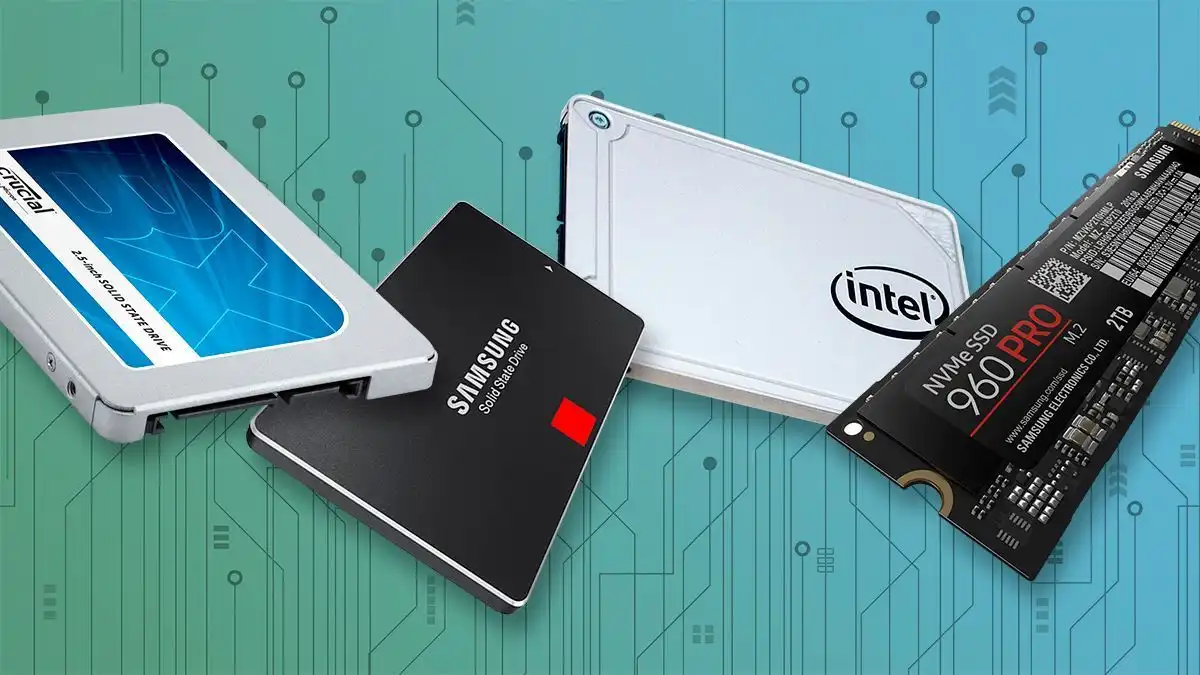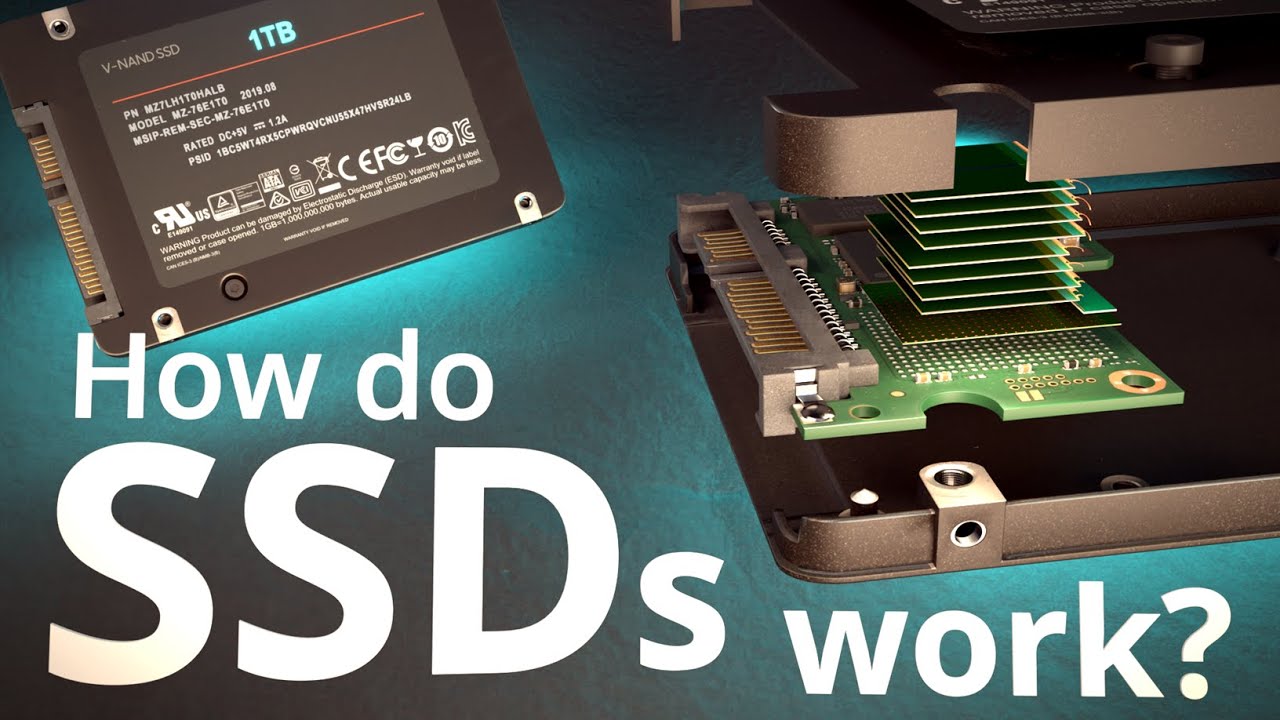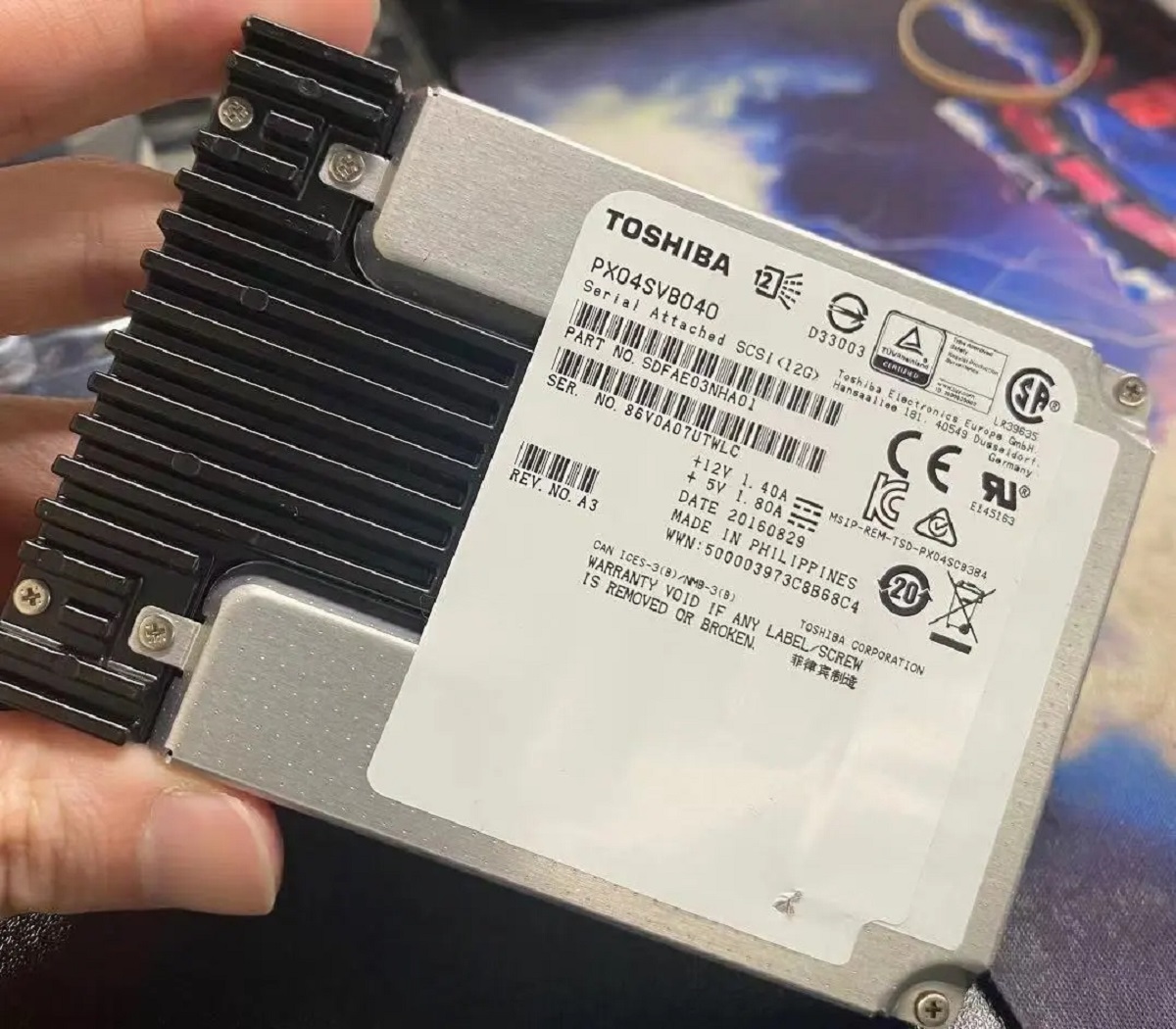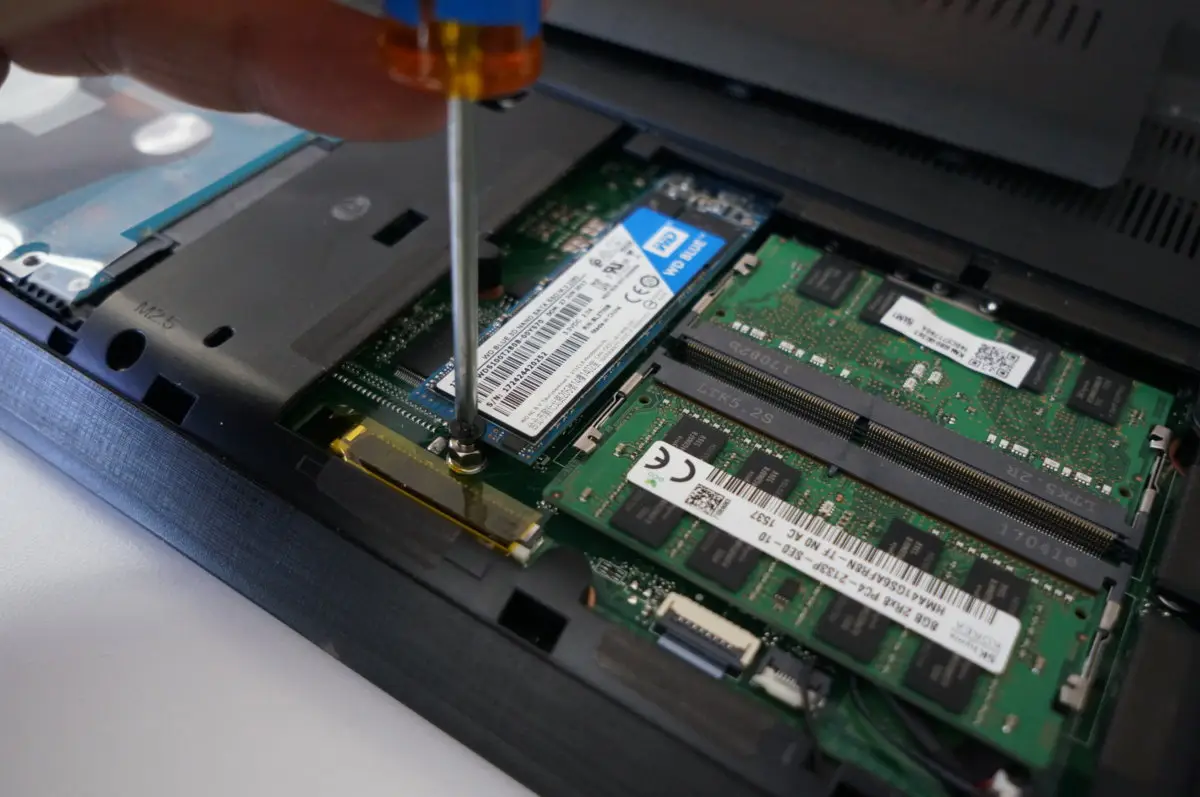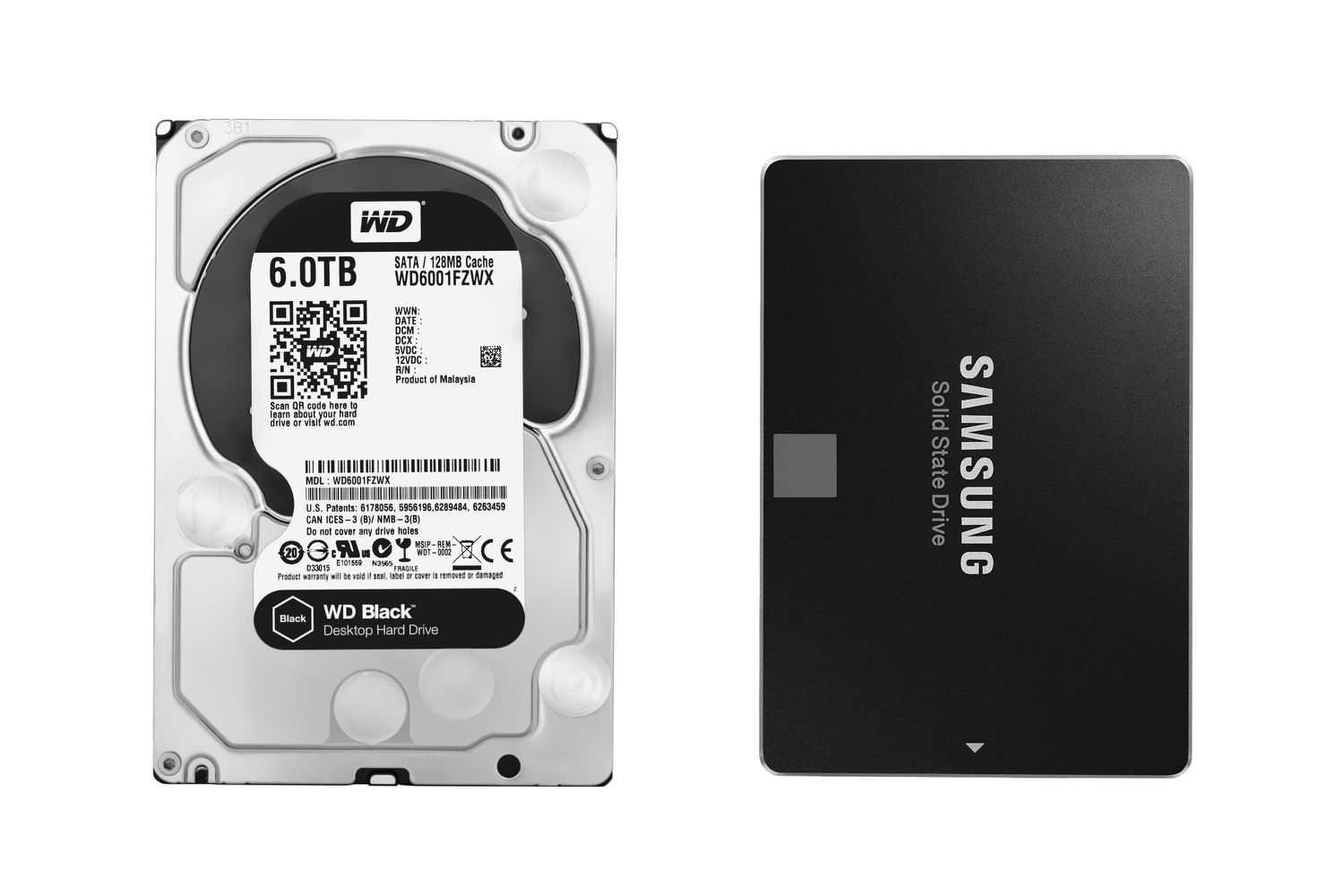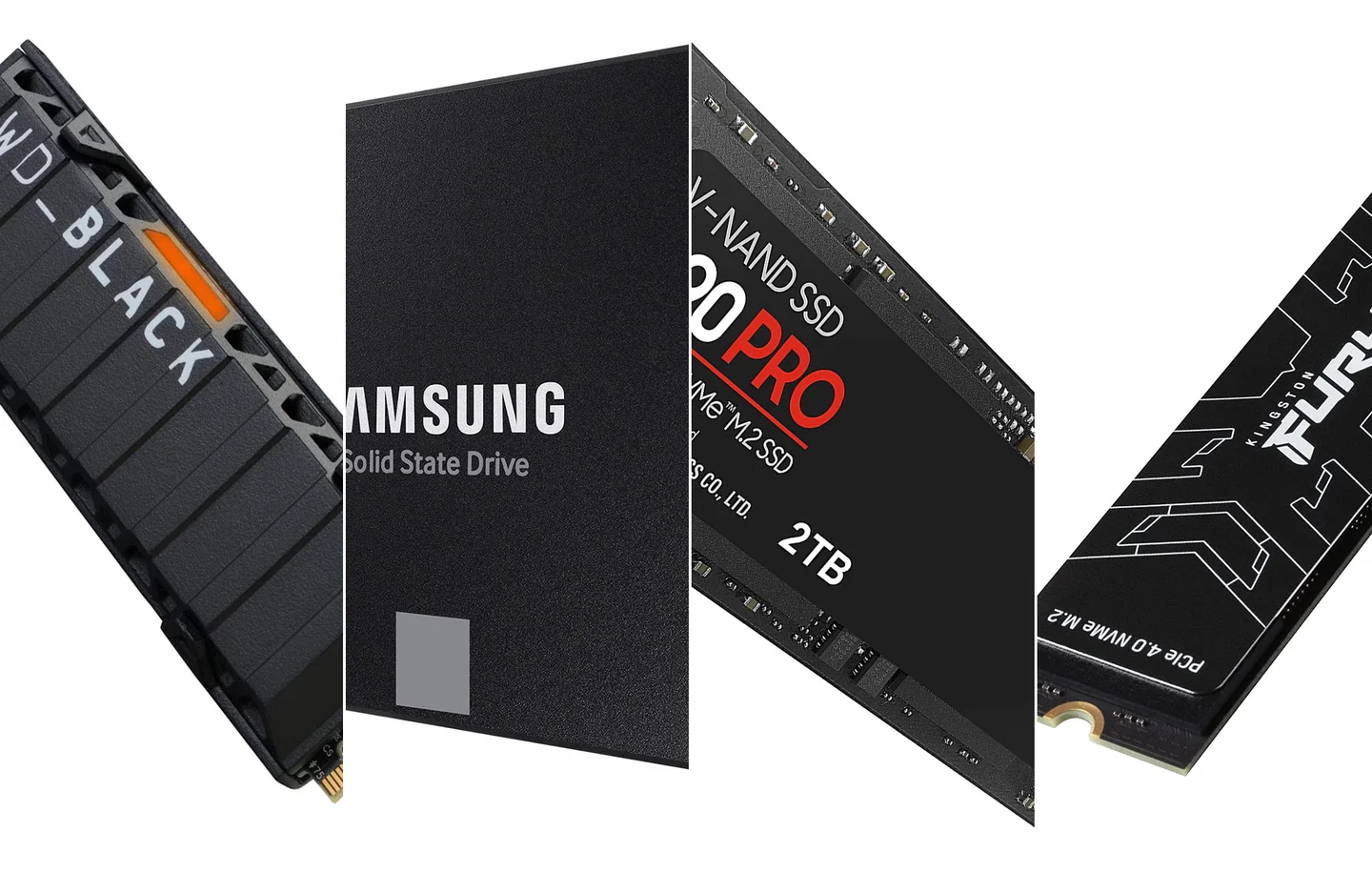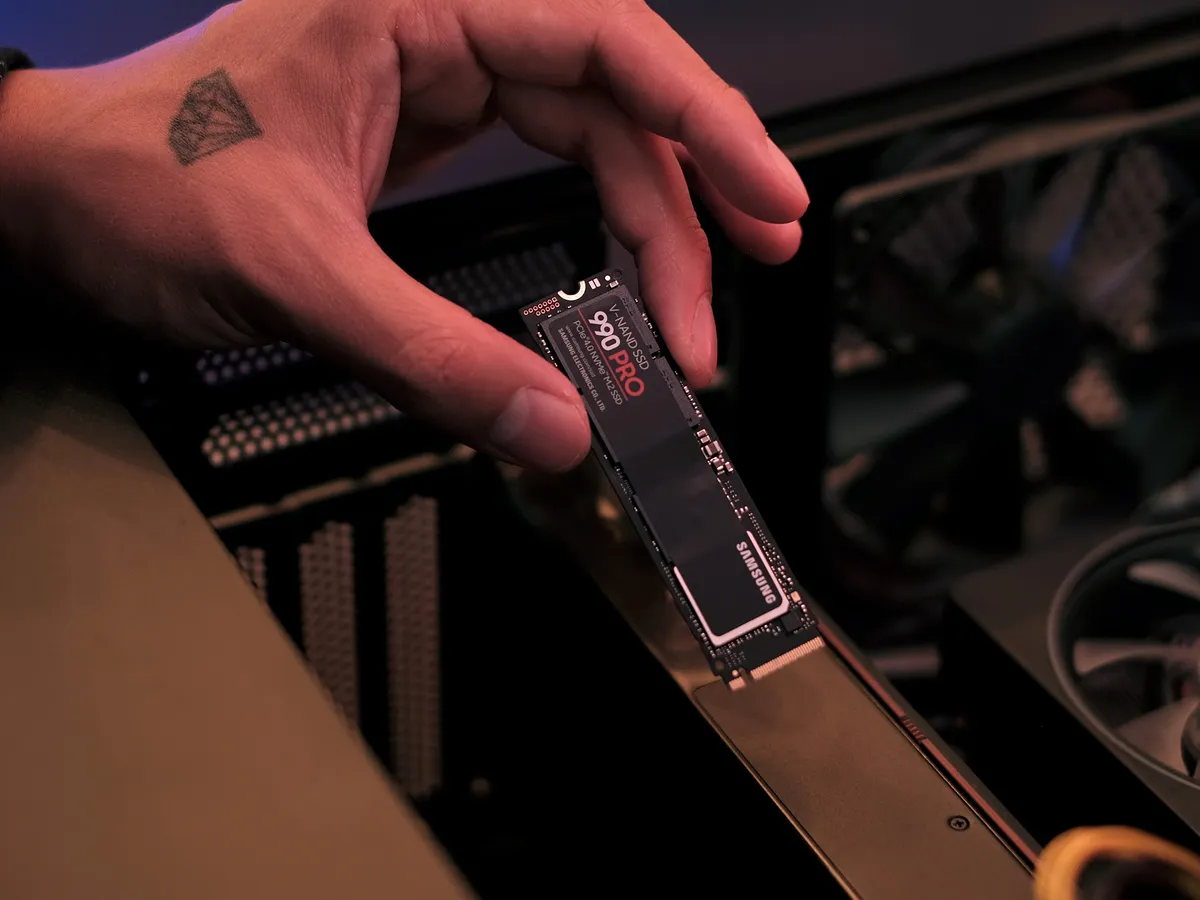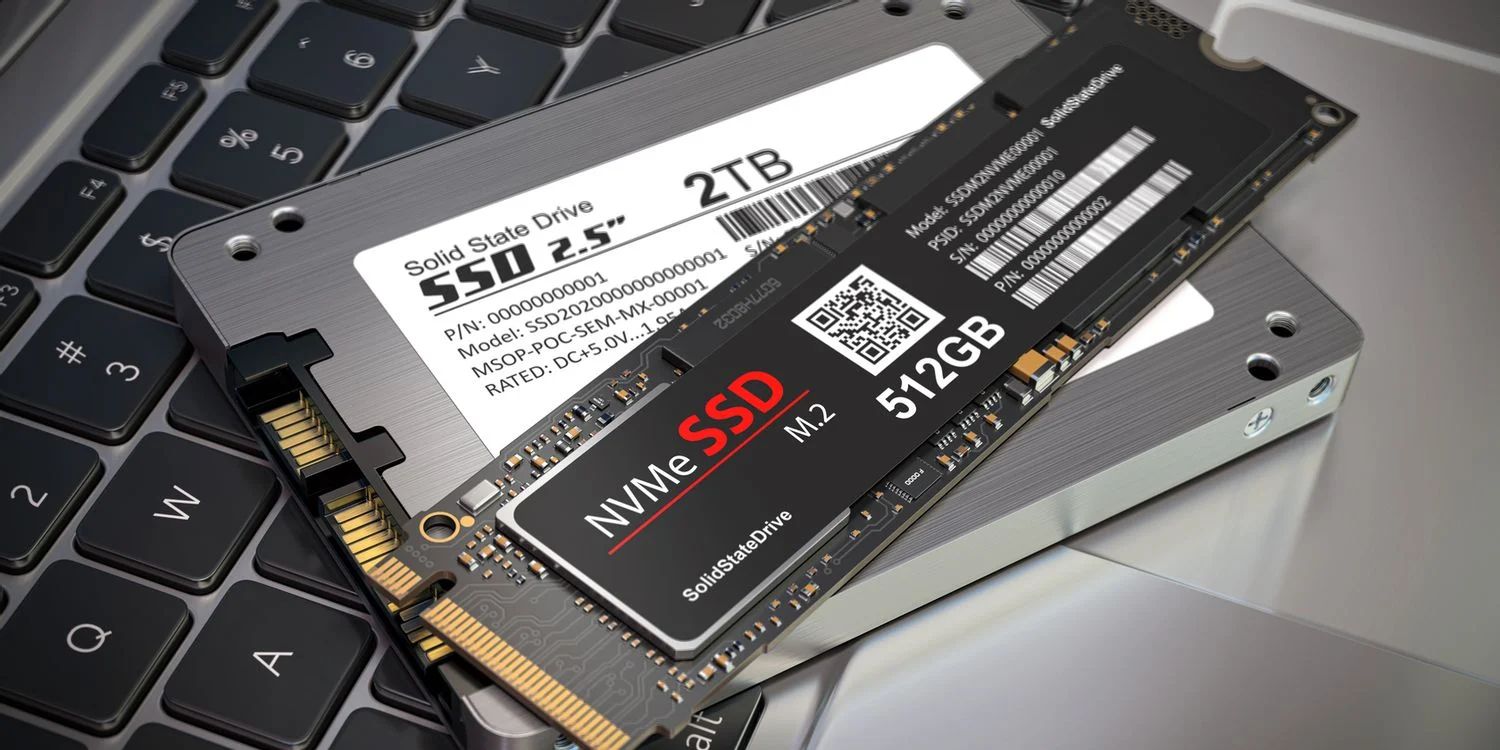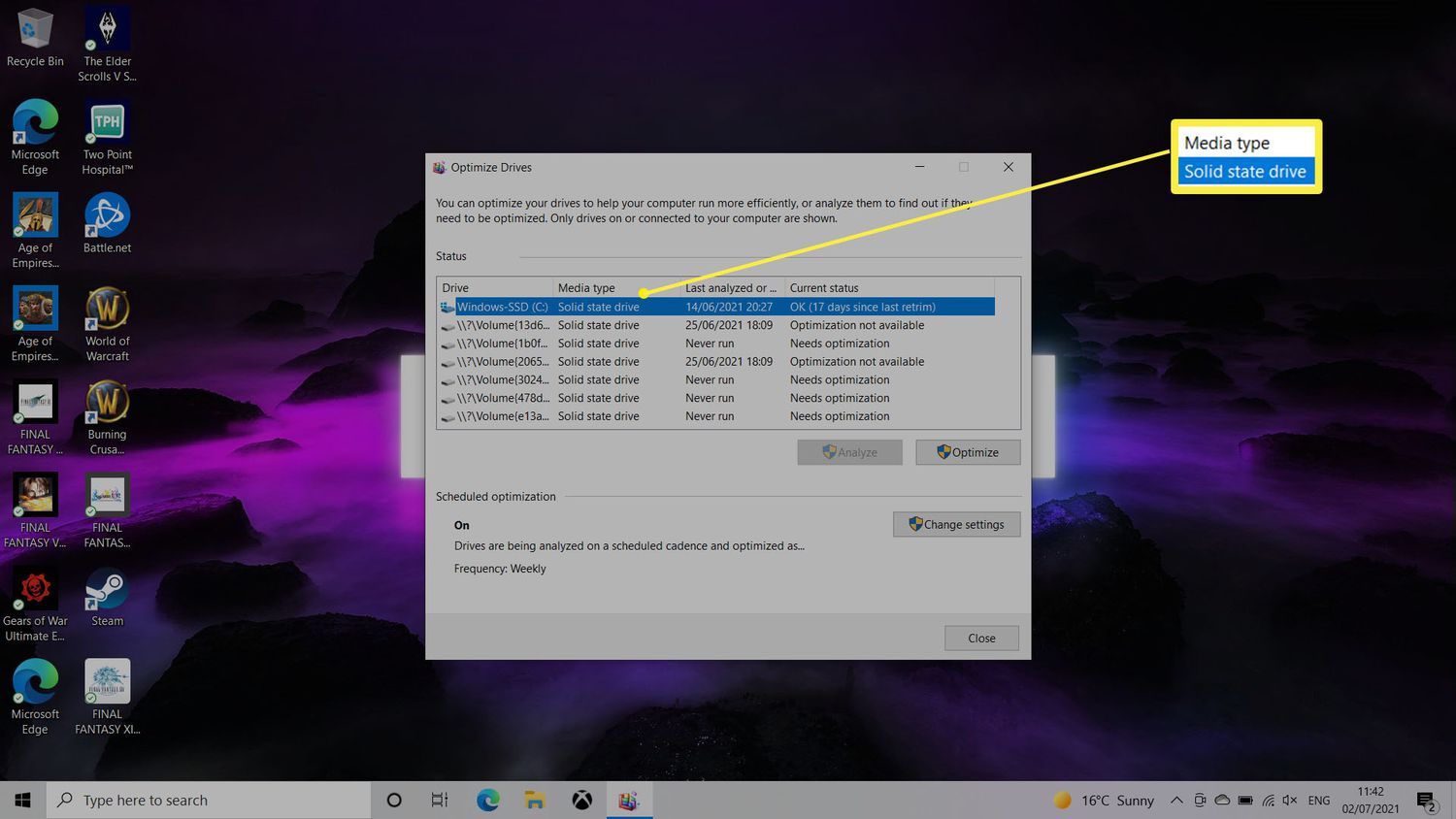Introduction
Welcome to our guide on the fascinating world of SSDs, or Solid State Drives. In recent years, SSDs have become increasingly popular due to their lightning-fast speeds and improved durability compared to traditional hard disk drives (HDDs). Whether you’re a gamer, a professional, or a casual user, understanding how SSDs function and how they handle read and write operations is crucial for making informed decisions when it comes to storage.
But what exactly is an SSD? How does it differ from an HDD? And how do these devices handle the important read and write operations to ensure data integrity and longevity? In this comprehensive guide, we’ll delve into the inner workings of SSDs, discuss the lifespan of these drives, and explore factors that can affect their durability. We’ll also shed light on the frequently asked question: How many read writes can an SSD handle?
By the end of this article, you’ll have a clear understanding of SSD technology and be equipped with the knowledge to optimize the lifespan of your SSD, ensuring that it continues to perform at its best for years to come.
So, if you’re ready to learn more about the marvels of SSDs and uncover the truth about read and write operations on these drives, let’s dive right in!
What is an SSD?
An SSD, or Solid State Drive, is a type of storage device that uses flash memory to store data. Unlike traditional hard disk drives (HDDs) that rely on spinning disks and mechanical components, SSDs are entirely electronic and have no moving parts. This fundamental difference in design gives SSDs several advantages over HDDs.
One of the key advantages of SSDs is their incredibly fast data transfer speeds. Unlike HDDs, which require a physical read/write head to locate and access data on the spinning disk, SSDs can access data almost instantaneously. This makes SSDs ideal for tasks that demand high-speed data access, such as booting up your computer, launching applications, or loading large files.
Another noteworthy advantage of SSDs is their improved durability and resistance to physical damage. Because SSDs don’t have any moving parts, they are less susceptible to shock and vibration, making them more reliable in portable devices like laptops. In addition, SSDs are less prone to failure due to mechanical wear and tear, as there are no spinning disks or read/write heads that can degrade over time.
Furthermore, SSDs are generally more power-efficient than HDDs. Since there are no spinning disks that require constant power to rotate, SSDs consume less energy and generate less heat. This not only contributes to longer battery life in laptops and portable devices but also helps to reduce the overall power consumption of your system.
Overall, SSDs have revolutionized the storage industry by offering significant performance improvements and enhanced durability. Whether you’re a professional needing fast access to large datasets, a gamer seeking reduced loading times, or a casual user wanting a more responsive and reliable computing experience, SSDs are an excellent choice for upgrading your storage solution.
How does an SSD Work?
To understand how an SSD works, we first need to delve into the basic components and technologies that make up these impressive storage devices.
At the heart of an SSD are NAND flash memory chips. These chips are responsible for storing the data on the drive. NAND flash memory consists of an array of memory cells that can hold electrical charges to represent 1s and 0s—the basic building blocks of digital data.
SSDs also contain a controller, which acts as the brain of the drive. The controller is responsible for managing data flow, handling read and write operations, and ensuring data integrity and reliability. It performs various functions, such as data compression, error correction, wear leveling, and garbage collection.
When you save data to an SSD, the controller takes the incoming data and writes it to specific memory cells on the NAND flash chips. To write data, the controller applies a voltage to the selected cells, which traps electrical charges in the memory cells, representing the desired data. This process is known as programming.
When it comes to reading data from an SSD, the controller determines the location of the data and retrieves the electrical charges from the appropriate memory cells. By measuring the changes in voltage caused by the trapped charges, the controller can decipher the stored data and deliver it to the computer for processing.
It’s important to note that the process of writing data to an SSD is more complex than reading data. Unlike reading, which only requires retrieving the charges from memory cells, writing involves both erasing and programming. To write new data to an SSD, the controller must first erase the memory cells by applying a higher voltage to remove the trapped charges. Then, the controller can program the cells with the new data.
An essential aspect of SSD operation is wear leveling. Since NAND flash memory cells have a limited lifespan and can only endure a certain number of write cycles before they start to degrade, wear leveling technology ensures that data is distributed evenly across the memory cells. This avoids excessive wear on specific cells and extends the overall lifespan of the SSD.
Overall, the combination of NAND flash memory chips and a sophisticated controller allows SSDs to deliver fast read and write speeds, improved durability, and excellent performance for a wide range of applications.
Understanding Read and Write Operations on SSDs
Read and write operations are fundamental processes that occur on an SSD when data is accessed or written to the drive. These operations are crucial for data integrity and play a significant role in the overall performance of the SSD.
When it comes to reading data from an SSD, the process is relatively straightforward. The controller of the SSD locates the specific memory cells where the data is stored, retrieves the electrical charges from those cells, and delivers the data to the computer for processing. Due to the lack of moving parts and the use of NAND flash memory, SSDs can access data much faster than traditional hard disk drives (HDDs).
On the other hand, write operations on SSDs are more complex and involve multiple steps. When new data needs to be written to the drive, the controller first finds an empty or previously erased memory block. Next, the controller erases the entire block, clearing out any existing data. Once the block is blank, the controller can program new data into the memory cells.
One key point to note is that SSDs can only erase and write data on a block level, which is different from the random read and write access of individual sectors on HDDs. This block-level operation is due to the physical structure of NAND flash memory cells, which are grouped into blocks. The erase and write operations on SSDs occur at the block level, leading to a phenomenon known as the write amplification effect.
The write amplification effect refers to the additional data written to the SSD beyond what the host system intended. This effect occurs because the controller must erase whole blocks before writing new data, even if only a small portion of the block needs to be modified. As a result, SSDs tend to write more data than strictly necessary, which can impact the longevity and performance of the drive over time.
To mitigate the negative effects of write amplification, SSDs employ advanced technologies such as wear leveling and garbage collection. Wear leveling ensures that data is evenly distributed across the memory cells, preventing excessive wear on specific blocks and extending the overall lifespan of the SSD. Garbage collection, on the other hand, helps to reclaim and consolidate blocks of memory that have been marked as invalid or no longer in use, freeing up space for new data and improving write performance.
Overall, understanding the read and write operations on SSDs is essential for optimizing the performance and lifespan of these storage devices. By implementing advanced techniques like wear leveling and garbage collection, SSDs can deliver fast and reliable read and write speeds while maintaining data integrity and longevity.
Lifespan of an SSD
The lifespan of an SSD, often referred to as its endurance or durability, is an important consideration when evaluating these storage devices. While SSDs offer numerous advantages over traditional hard disk drives (HDDs), their lifespan is influenced by several factors.
SSDs, like all flash-based storage, have a finite lifespan due to the nature of NAND flash memory cells. Each NAND cell can only endure a certain number of write cycles before it starts to degrade and eventually fails. This attribute is known as program-erase (P/E) cycles.
The durability of an SSD is typically measured in terabytes written (TBW), which represents the total amount of data that can be written to the drive over its lifespan. Manufacturers provide TBW ratings for their SSDs based on the expected endurance of the NAND flash memory used in the drive.
It’s important to note that the TBW rating is an estimate based on average usage patterns, and actual lifespan can vary depending on various factors such as the type of NAND flash memory, controller technology, and usage conditions.
Fortunately, advancements in SSD technology have significantly improved the durability of these drives over the years. Modern SSDs are designed to handle substantial workloads and have considerably higher TBW ratings compared to earlier generations.
In addition to TBW, SSD manufacturers often provide other metrics like mean time between failures (MTBF) and write speed guarantees. These metrics provide additional insights into the expected lifespan and performance of an SSD.
It’s worth mentioning that the vast majority of SSD users will likely not reach the maximum TBW rating of their drives within their useful lifespan. For most consumer-grade SSDs, the TBW rating is more than sufficient for everyday usage, including regular file operations, gaming, and multimedia tasks.
However, it’s important to consider that heavy workloads, such as extensive video editing, database management, and continuous high-volume data transfers, can put more stress on the NAND cells and potentially reduce the lifespan of the drive.
Overall, while an SSD does have a limited lifespan due to the finite number of P/E cycles, modern drives offer excellent durability for typical user scenarios. By choosing an SSD with a higher TBW rating and employing good storage management practices, such as regular backups, optimizing storage usage, and keeping the drive well-maintained, you can ensure that your SSD provides reliable and high-performance storage for years to come.
Factors Affecting the Lifespan of an SSD
While solid state drives (SSDs) offer improved durability compared to traditional hard disk drives (HDDs), their lifespan can still be influenced by several factors. Understanding these factors can help you optimize the longevity of your SSD and ensure reliable performance for an extended period.
1. Write Intensity: The amount of data you write to your SSD on a regular basis can impact its lifespan. Heavy write-intensive tasks, such as large file transfers, video editing, or running virtual machines, can put more strain on the NAND flash memory cells and decrease their lifespan faster than typical usage patterns. It’s important to strike a balance between performance needs and minimizing unnecessary write operations.
2. Drive Capacity: The capacity of your SSD can also affect its lifespan. Larger capacity SSDs tend to have more NAND flash memory cells, which allows for better wear leveling as data is distributed more evenly across the cells. This can result in improved durability compared to lower capacity drives.
3. NAND Flash Type: The type of NAND flash memory used in an SSD can impact both its performance and lifespan. SLC (Single-Level Cell) NAND, MLC (Multi-Level Cell) NAND, and TLC (Triple-Level Cell) NAND are the common types, with SLC offering the highest endurance but at a higher cost. MLC and TLC have lower endurance but are more cost-effective. Choosing an SSD with higher-grade NAND flash can provide better durability.
4. Temperature and Environmental Factors: High temperatures can accelerate the degradation of NAND flash cells. It’s important to ensure your SSD is adequately cooled and not exposed to extreme temperature variations. Additionally, factors such as humidity, dust, and vibrations can also affect the lifespan of an SSD, so it’s advisable to keep the drive in a clean and stable environment.
5. Power Failure and Surges: Power interruptions and voltage fluctuations during read and write operations can potentially cause data corruption or affect the SSD’s controller. Using a reliable power source and having proper surge protection can minimize these risks and safeguard the lifespan of your SSD.
6. SSD Controller and Firmware: The quality of the SSD controller and firmware plays a crucial role in managing the read and write operations, implementing wear leveling algorithms, and ensuring overall drive longevity. Choosing an SSD from reputable manufacturers with a track record of reliable firmware and controller technology is recommended.
By taking these factors into consideration and adopting good storage management practices, such as avoiding unnecessary writes, keeping your SSD cool, and protecting it from power irregularities, you can maximize the lifespan of your SSD. While SSDs do have a finite lifespan, with careful usage and maintenance, you can enjoy reliable and high-performance storage for years to come.
How Many Read Writes Can an SSD Handle?
One common question that arises when considering the lifespan of an SSD is: how many read writes can an SSD handle? In other words, how many times can you read from and write to an SSD before it starts to degrade and fail?
The answer to this question depends on several factors, including the type of NAND flash memory used in the SSD, the technology employed for wear leveling, and the overall usage patterns. As technology has advanced, modern SSDs have become increasingly durable, offering higher endurance ratings compared to their earlier counterparts.
NAND flash memory cells in an SSD have a limited lifespan, measured in program-erase (P/E) cycles. The P/E cycle represents one complete write operation, which involves an erase phase followed by a program phase. The number of P/E cycles an SSD can endure varies depending on the type of NAND flash memory:
- Single-Level Cell (SLC): SLC flash memory offers the highest endurance among the different types. It can withstand tens of thousands of P/E cycles, making it ideal for applications with high write intensity and requirements for maximum durability. However, SLC SSDs tend to be more expensive due to their higher endurance ratings.
- Multi-Level Cell (MLC): MLC flash memory is the most commonly used type in consumer-grade SSDs. It offers a good balance between performance, cost, and endurance. MLC SSDs can generally withstand tens of thousands of P/E cycles.
- Triple-Level Cell (TLC): TLC flash memory provides higher storage density and cost-effectiveness, but it has lower endurance compared to SLC and MLC. TLC SSDs typically have endurance ratings in the range of thousands of P/E cycles.
It’s important to note that the endurance ratings provided by SSD manufacturers are estimates based on industry testing protocols and average usage patterns. Actual usage and environmental factors can cause variations in the SSD’s lifespan.
To optimize the lifespan of your SSD, wear leveling technology is employed. This technology ensures that data is evenly distributed across the NAND flash memory cells, preventing excessive wear on specific cells. By spreading out the write operations, wear leveling helps extend the overall lifespan of the SSD.
In practice, for typical consumer usage, it is highly unlikely that you will reach the maximum endurance rating of your SSD within its useful lifespan. The TBW (terabytes written) rating provided by manufacturers gives an estimation of the total amount of data that can be written to the drive before it reaches its specified endurance limit. Most consumer-grade SSDs today offer TBW ratings in the range of hundreds of terabytes or even petabytes.
Ultimately, the exact number of read writes that an SSD can handle depends on the specific model, the workload it is subjected to, and how well it is managed. By choosing an SSD with higher endurance ratings, practicing good storage management habits, and avoiding excessive write-intensive tasks, you can ensure that your SSD lasts for a significant period without compromising performance or reliability.
Advanced Wear Leveling Techniques
Wear leveling is a critical aspect of SSD technology that helps to distribute write operations evenly across the NAND flash memory cells, extending the lifespan of the drive. To achieve effective wear leveling, SSDs employ advanced techniques that optimize the usage of the memory cells and mitigate the negative effects of write amplification.
1. Dynamic and Static Wear Leveling: Dynamic wear leveling is the most common technique used in SSDs. It continuously monitors the usage and erases the blocks with higher write counts, moving the data to less-used blocks. This dynamic redistribution ensures that write operations are spread evenly across the NAND flash memory cells. Static wear leveling, on the other hand, redistributes data during idle periods, reorganizing the block allocation to ensure balanced wear across the drive.
2. Over-Provisioning: Over-provisioning involves allocating a portion of an SSD’s total capacity for internal use by the drive’s controller. This extra space is not accessible to the user but is crucial for wear leveling and optimizing performance. By providing additional free space, over-provisioning enables wear leveling algorithms to work more efficiently and improves the overall lifespan and performance of the SSD.
3. Garbage Collection: Garbage collection is a process that helps maintain the performance and endurance of an SSD. As data is deleted or modified, the NAND flash memory cells become fragmented, with both valid and invalid data mixed together. Garbage collection identifies and consolidates the blocks that contain only invalid (deleted) data, freeing them up for future use. This process helps to optimize the available space and reduce write amplification, ensuring efficient wear leveling.
4. TRIM Command: The TRIM command is an essential feature in modern operating systems that helps SSDs efficiently manage deleted data. When a file is deleted, the TRIM command notifies the SSD which blocks contain invalid data. This allows the SSD to mark those blocks as available for immediate erasure during the garbage collection process. The TRIM command helps to maintain optimal performance by reducing write amplification and improving the efficiency of wear leveling techniques.
5. Machine Learning and Predictive Algorithms: Some advanced SSDs employ machine learning and predictive algorithms to anticipate data write patterns and optimize wear leveling accordingly. These algorithms analyze data access patterns, usage history, and other factors to predict and allocate resources for optimal wear distribution. By dynamically adjusting wear leveling strategies, these SSDs can maximize the lifespan and performance of the drive based on specific workloads and usage patterns.
Through these advanced wear leveling techniques, SSD manufacturers aim to enhance the lifespan, performance, and endurance of their drives. By effectively managing write operations and extending the durability of NAND flash memory cells, these techniques contribute to the overall reliability and performance of SSDs in various applications and workloads.
Tips to Extend the Lifespan of Your SSD
While solid state drives (SSDs) are designed for durability, implementing good storage management practices can help extend their lifespan and ensure optimal performance over time. Here are some tips to consider:
1. Avoid Excessive Write Operations: SSDs have a finite number of program-erase (P/E) cycles, so minimizing unnecessary write operations can help prolong their lifespan. Be mindful when performing large file transfers or running write-intensive tasks. Saving temporary files and frequent system writes to a separate HDD can reduce the strain on your SSD.
2. Keep Your SSD Cool: High temperatures can impact NAND flash memory cells and accelerate their degradation. Ensure proper cooling for your SSD by maintaining adequate airflow in your system. Avoid placing your SSD near heat sources and consider using cooling solutions like heat sinks or fans to dissipate heat effectively.
3. Enable TRIM and AHCI: Ensure that your operating system supports and enables the TRIM command for your SSD. TRIM improves performance and helps prolong the lifespan of your SSD by allowing the drive to quickly identify and erase blocks marked as deleted. Additionally, ensure that your SSD is connected using the AHCI (Advanced Host Controller Interface) mode for optimal performance and compatibility.
4. Enable Power Loss Protection: If your SSD supports it, enable power loss protection features. These features help prevent data loss or corruption during unexpected power outages or surges, ensuring the integrity of your stored data and protecting the health of your SSD.
5. Regularly Update Firmware: SSD manufacturers often release firmware updates to enhance performance, address bugs, and improve durability. By keeping your SSD’s firmware up to date, you can benefit from these improvements and ensure that your drive remains compatible with the latest technologies.
6. Maintain Adequate Free Space: Leaving some free space on your SSD can promote better performance and longevity. Over-provisioning, or allocating a portion of the SSD’s total capacity for internal use, can help improve wear-leveling efficiency and extend the lifespan of the drive. Aim for at least 10-20% of free space on your SSD for optimal performance and durability.
7. Perform Regular Backups: While SSDs are generally reliable, unexpected failures can still occur. Regularly backing up your data to an external storage solution or cloud storage not only protects your important files but also ensures that you can restore your data in case of any unforeseen issues with your SSD.
8. Use Reliable Power Source: Unstable power sources or sudden power losses can potentially damage your SSD or lead to data corruption. Ensure that your system is connected to a reliable power source with adequate surge protection to minimize the risk of power-related issues.
By following these tips and employing good storage management practices, you can extend the lifespan of your SSD and maintain its performance and reliability over time. While SSDs are already durable storage solutions, taking proactive measures can ensure that your SSD serves you well for years to come.
Conclusion
Solid State Drives (SSDs) have revolutionized the storage industry with their fast speeds, improved durability, and enhanced performance compared to traditional hard disk drives (HDDs). Understanding how these drives work, their lifespan, and the factors that can affect their durability is crucial for making informed decisions when it comes to storage solutions.
In this guide, we have explored the fundamentals of SSDs, including their structure, read and write operations, and the advanced wear leveling techniques that optimize their lifespan. We have also discussed factors that can influence an SSD’s durability and provided practical tips to extend its lifespan.
SSDs rely on NAND flash memory, which offers high performance, power efficiency, and reliability. The lifespan of an SSD is determined by the number of program-erase (P/E) cycles its NAND flash memory cells can endure. Factors such as write intensity, drive capacity, temperature, and power stability can influence the overall longevity of the SSD.
Advanced wear leveling techniques, including dynamic and static wear leveling, over-provisioning, garbage collection, and the support of the TRIM command, help ensure that write operations are evenly distributed across the NAND flash memory cells. These techniques mitigate write amplification and maximize the lifespan of an SSD.
To extend the lifespan of your SSD, it is important to minimize unnecessary write operations, keep the drive cool, enable TRIM and AHCI, update firmware regularly, maintain adequate free space, perform regular backups, and use a reliable power source. By following these practices, you can optimize the performance and durability of your SSD.
Overall, SSDs are a reliable and efficient storage solution for a wide range of applications, from home computing to professional use. By understanding how SSDs work, being aware of their limitations, and adopting best practices for maintenance and usage, you can ensure that your SSD delivers fast, reliable, and durable storage for years to come.







